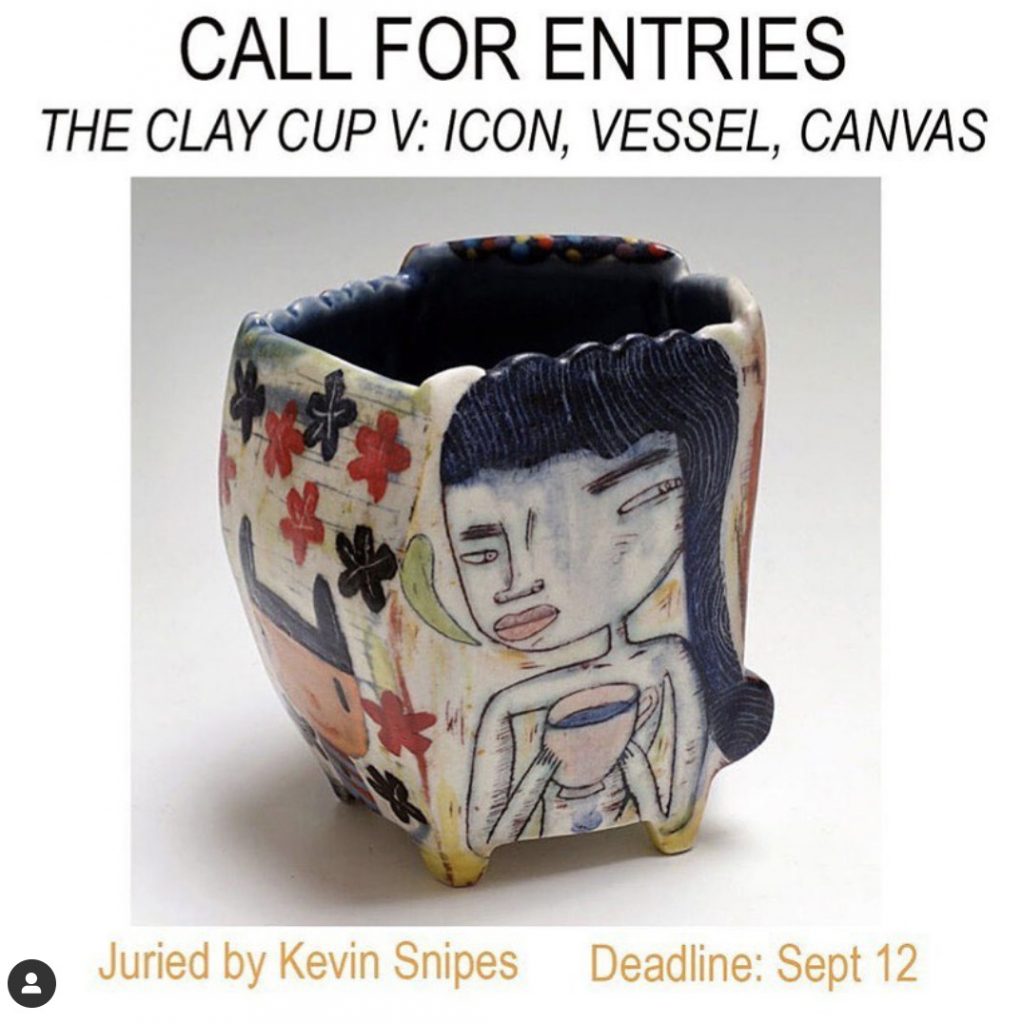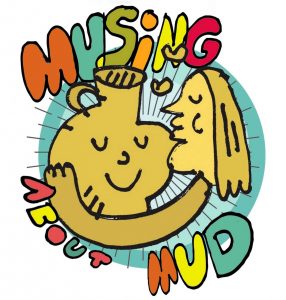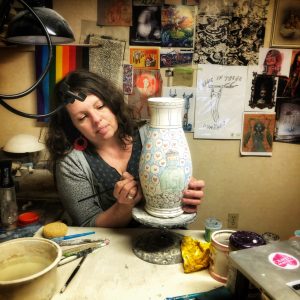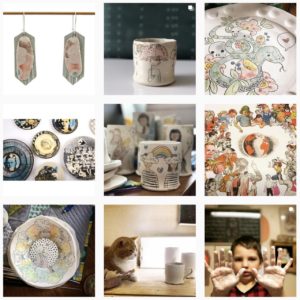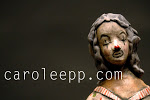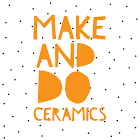by Carole Epp | Nov 17, 2021 | call for entry
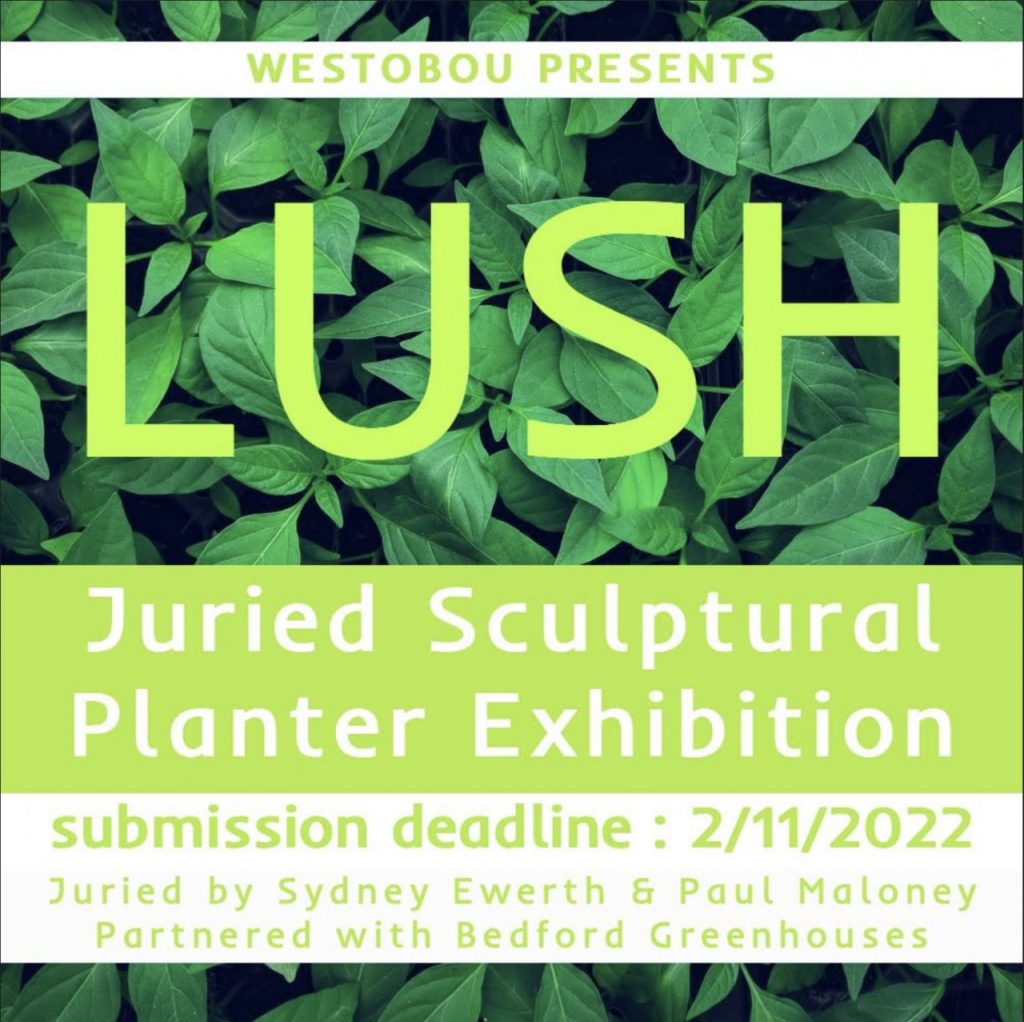
Westobou is now accepting submissions for LUSH, a juried planter & vase exhibition. This exhibition is meant to explore how sculpture and flora intersect, asking the artists to imagine a fantasy ecosystem that not only houses the organic element, but commemorates the beauty and history of it through composition, proximity, and relationship. All ceramic and mixed material artworks, functional and sculptural, are eligible if they can house a live plant and exist in a greenhouse for the duration of the exhibition. We will consider form, concept, and function. We are looking for planters of any kind that push the aesthetic boundaries of the typical planter or vase form. With Westobou’s support, juror’s Sydney Ewerth and Paul Maloney will curate an exhibition of planters to be displayed in a greenhouse at Bedford Greenhouses in Augusta, GA. Bedford Greenhouses will supply the flora that best pairs with each piece accepted into the exhibition.
Exhibition Dates: April 11-23, 2022
Application Due: February 11, 2022
APPLY NOW!!
by Carole Epp | Sep 27, 2021 | call for entry
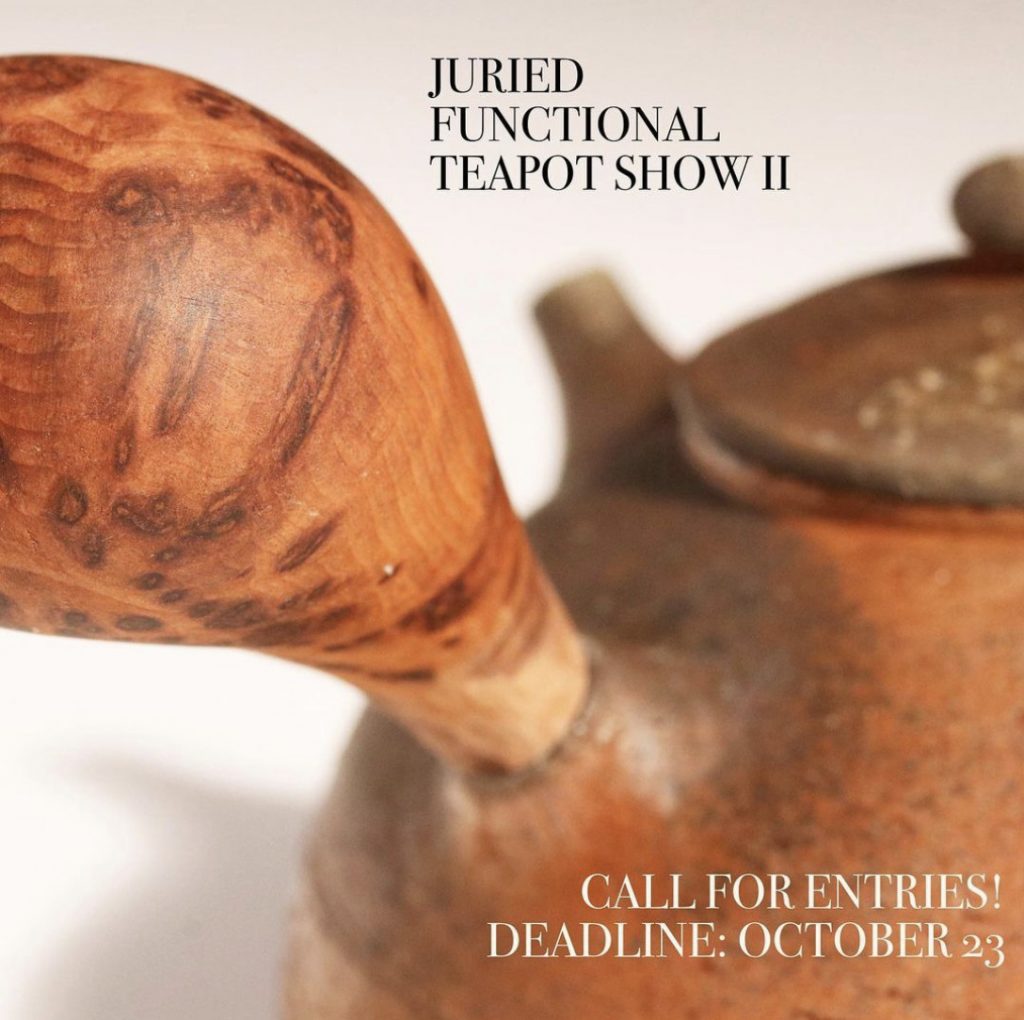
Calling for teapot submissions! The Juried Functional Teapot Show II will be at NCECA in Sacramento next spring. Jurors this year are: John Neely (@neelyjc), Cooper Jeppesen (@cooperjeppesenceramics) and me.
Functionality is foremost in our decision-making process and we will try to pick a diverse range of teapots to show. We will choose just 10 teapots. And this year’s guest artist will be Pete Pinnell!
You have until October 23rd to email your submission. Send to: [email protected]. Up to 3 pictures of a single teapot (the exact one you would like to show), title, size, clay, firing/decorative method and price. No cost to submit. Spread the word!
Oh also, the teapot pictured here was made by Cooper Jeppesen and was part of the inaugural JFTS.
by Carole Epp | Aug 18, 2021 | residency opportunity

We are now accepting applications for 2022. The deadline to apply is September 15, 2021.
We are seeking professional artists working at a high level in their discipline who can give new insights and focus to Grand Canyon and the surrounding communities as an on-site resident artist at Grand Canyon National Park.
We welcome applicants from a wide variety of artistic disciplines, including visual art (two and three-dimensional, photography, sculpture, painting, textiles, drawing, or collage), installation or land-based art, printmaking, audio (performance or composition), film (documentary, fictional, or art), writing (poetry, fiction, essays, storytelling, or playwriting), indigenous arts, ethnographic fine art, new media, performance art (choreography, dance, or theater arts professionals), social practice, and interdisciplinary arts.
While no specific requirements will be placed on the content or direction of the artists’ proposals, applicants must have an idea of direction, topic, and the project they will work on while during their residency when they apply. Projects may evolve and change during their residency as long as the new direction also has relevance to the canyon or its communities and meets all other program requirements and NPS guidelines.
While in residence, artists will be encouraged to work collaboratively with NPS staff and to make use of the many resources NPS will make available to them, including but not limited to: access to park staff and researchers, access to park collections, access to park library, access to trails and backcountry opportunities as is possible at time of residency.
Artists must, in their application, be able to articulate how their project would contribute to our understanding of Grand Canyon (in its broadest interpretation). Evidence of some preliminary research and understanding of the canyon is expected. Artists are not required to adhere to official park themes. However, if you wish to use them as guidance for your inspiration, you can find them on the park’s website.
Full details HERE.
by Carole Epp | Aug 3, 2021 | call for entry
Belonging Curated by Angelik Vizcarrondo-Laboy
Hosted by:
Crocker Art Museum
216 O Street
Sacramento, CA 95814
www.crockerart.org
(916) 808-7000
ENTRY DEADLINE: Wednesday, September 8, 2021 (11:59pm MDT)
EXHIBITION DATES: February 20 – May 8, 2022
ABOUT THE 2022 NCECA ANNUAL
Belonging, the 2022 NCECA Annual exhibition will be one of the cornerstone events of the upcoming conference in Sacramento, California. The Crocker Art Museum will be dedicating more than 4,000 square feet of space to the exhibition’s installation. Curator Angelik Vizcarrondo-Laboy has invited artists Alex Anderson, Natalia Arbelaez, Cannupa Hanska Luger, Salvador Jimenez-Flores, and Habiba El-Sayed whose works will ground key concepts while generating an expanded framework for inclusion of works by additional artists that will be selected through an open call for submission. Writing about her organizing ideas and motivations for the exhibition, Angelik Vizcarrondo-Laboy shares the following:
A sense of belonging implies an affinity or connectedness with a place, social or cultural group. Belonging is survival. It is a powerful feeling that shapes our identity. While achieving a sense of belonging is fulfilling when realized, it can be a laborious and even painful endeavor otherwise. Belonging strongly signifies spatial relationships, from navigating new territories to remaining rooted in formative places long vacated. Efforts to balance attachments to past and present spaces may evoke nostalgia and dissonance. Many also seek a connection to their ancestors and their land despite distance. Voluntary and involuntary migration has profoundly impacted millions’ sense of belonging through disrupted lineages, loss of material culture and narratives, and disconnection from land. Belonging explores the intangible and tangible approaches we engage in developing and maintaining our sense of connectedness across time and space. Belonging also relates to ownership or possession, an interpretation that has caused much harm to humans, non-human species, and natural resources. This exhibition seeks to upend normalized power dynamics by prioritizing humans’ desire to belong to something instead of things belonging to them.
Acceptance or lack thereof also intertwine with a sense of belonging. Identity forms at the intersection of race, ethnicity, gender, sexuality, and class, among other categories. While these markers can be keys to unlocking a sense of belonging, we may experience rejection and exclusion without the embrace of others. An affinity to any entity also necessitates bearing the weight of associated histories and realities. For example, belonging to the United States constitutes acknowledging that we live on Indigenous land, its brutal history of slavery, continuous misogyny, xenophobia, transphobia, homophobia, and systemic racism that disproportionally affects Black and Brown people. At the root of these issues lies the negation of belonging towards particular groups of people, namely people of color, LGBTQAI, and women, as dictated by colonialist and patriarchal white supremacist ideals. The exhibition Belonging will also showcase the coded ways in which we navigate inhospitable environments, push back against oppressive systems that deny belonging, and the role of community in fostering inclusion.
ABOUT CURATOR ANGELIK VIZCARRONDO-LABOY
Angelik Vizcarrondo-Laboy (She/Her) is a New York and Los Angeles-based curator, writer, and arts administrator of contemporary art and craft. Her current research focuses on the subversive power of humor, cuteness, and leisure as tools of protest. Amplifying the voices of BIPOC artists is central to her practice. She serves as Assistant Curator at the Museum of Arts and Design (MAD), New York. She has helped the curatorial team organize over twenty exhibitions since 2016, including 2021’s Craft Front & Center. She also oversees MAD’s Burke Prize, a prestigious contemporary craft award. Recent projects include exhibitions Sleight of Hand (2020) at the Center for Craft, North Carolina, where she was a 2020 curatorial fellow, and Clay Is Just Thick Paint (2020) at Greenwich House Pottery, New York. She has also contributed to Cultured and American Craft magazines and catalogs at MAD and the Bemis Center for Contemporary Arts, Nebraska. She earned her MA from the Bard Graduate Center, New York, in Decorative Arts, Design History, & Material Culture.
ABOUT THE CROCKER ART MUSEUM
The Crocker Art Museum features the world’s foremost display of California art and is renowned for its holdings of European master drawings and international ceramics. The Crocker serves as the primary regional resource for the study and appreciation of fine art and offers a diverse spectrum of exhibitions, events, and programs to augment its collections, including films, concerts, studio classes, lectures, children’s activities, and more. The Museum has also dedicated the historic building’s entire first floor as an education center, which includes four classrooms, space for student and community exhibitions, the Gerald Hansen Library, and Tot Land. It is the only museum in the Sacramento region accredited by the American Alliance of Museums (AAM), a recognition given to fewer than 1,100 of the nation’s 33,000 museums. AAM accreditation certifies that a museum operates according to standards set forth by the museum profession, manages its collections responsibly, and provides quality service to the public.
Full details HERE.




